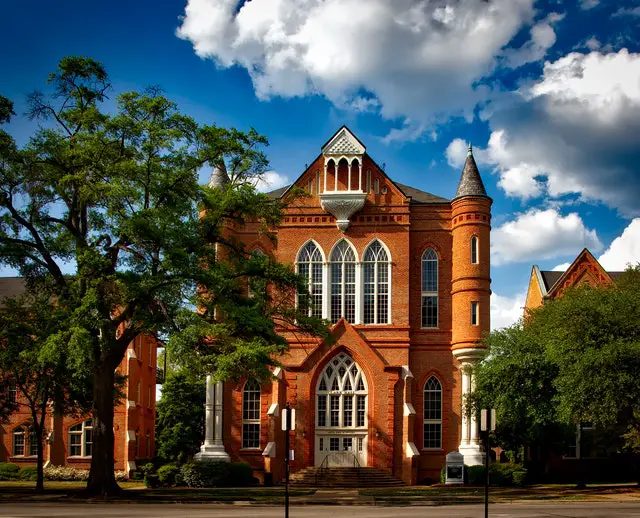
Finding and selecting the best medical school to study in the world is not always an easy task because one is always subjected to numerous universities or institutions which makes singling out a preferred choice a hard nut to crack.
The leading clinical medicine universities have excelled at producing research on a wide range of medical and scientific areas. Anesthesia, cardiology, general and internal medicine, gastroenterology, obstetrics, ophthalmology, radiography, and surgery are some of the specialties available.
You must receive a medical certificate that serves your qualification before beginning a career or vocation in any medical field, regardless of how skilled you are. A certificate can only be obtained from a medical school. So, if you want to acquire the ideal medical experience, you should enroll in one of the world’s top medical schools. These medical schools around the world offer high-quality, standardized medical education at various levels, including undergraduate, master’s, and doctoral.
Below are the top ten universities or institutions that are recognized as the best medical tertiary institutions based on their research and output.
1. University of Harvard: Harvard University is the oldest higher education institution in the United States, having been founded in 1636. The majority of Harvard’s students are graduate students, with international students accounting for more than 20% of the student body. Harvard University is centered in Cambridge, Massachusetts, although it also maintains facilities in Boston, such as the Harvard Medical School. The university boasts the world’s largest endowment of any university. More than 100 centers at Harvard conduct research across a wide range of topics.
Faculty from the school also teach in other Harvard science departments and work in clinical departments at some of the university’s affiliated hospitals. In the Boston area, there are four major teaching hospitals. The Harvard University curriculum now includes problem-based learning. A specific program focusing on biological research is also available, with just 30 applications accepted each year. Harvard medical students are members of one of five alumni-named groups. Students participate in athletic tournaments, work in small groups within the society, and attend social events. If you’re looking for one of the greatest medical schools in the world, Harvard University Medical School is a good place to start. It has excellent facilities and a high standard of education. The Harvard Library is the world’s biggest academic library, with over 70 libraries housing about 19 million books.
Harvard University is located in Cambridge, Massachusetts, on a 5457-acre campus. Cambridge, one of metropolitan Boston’s most prominent urban hubs, is organized around ancient city greens, tree-lined squares, and the sedgy banks of the Charles River. Harvard is located in the heart of Cambridge, providing direct access to the city’s diverse mix of shopping, restaurants, and entertainment. Cambridge is a part of Boston’s extensive public transportation system. You can easily reach anywhere you want to go with buses, cabs, and a subway stop right in the heart of Harvard Square. The field is within a 12-minute trip from downtown Boston.
More than 36,000 students are now enrolled at Harvard, with 6,699 in Harvard College, 13,120 as graduate and professional students, and 16,193 in Harvard Extension School. Harvard has a varied student body from over 50 states and 80 countries. With 20.4 million volumes, 180,000 serial titles, an estimated 400 million manuscript items, 10 million pictures, 124 million stored web pages, and 5.4 terabytes of born-digital archives and manuscripts, Harvard holds the world’s oldest academic library. At Harvard, around 70% of students get some form of financial aid, with about 60% receiving need-based scholarships and paying an average of $12,000 each year.
Harvard has around 2.79 lakh alumni in the United States and 59,000 alumni in 202 countries. It has around 10,400 academic appointments in affiliated teaching hospitals and about 2,400 world-class faculty members. Harvard has been home to 48 Nobel Laureates, 32 heads of state, and 48 Pulitzer Prize winners as students, faculty, or researchers. Harvard Medical School was founded in the late 1800s and has been at the forefront of medical innovation and influence ever since. The curriculum focuses on research, and it has produced a number of well-regarded clinical trials and research articles. The university is frequently ranked as the world’s best medical school, making it incredibly appealing – and exclusive – to prospective students. Students can earn a range of degrees, including M.D. and Ph.D. degrees, as well as more unusual degrees such as M.D./MBA.
Jill Stein, an acclaimed physician and Green Party presidential hopeful, is one of Harvard’s successful alumni (2012 and 2015). Helen B Taussig (pioneer of pediatric cardiology and co-developer of the Blalock-Thomas-Taussig shunt) and Sidney Farber (noted oncologist/pathologist, known as the “father of chemotherapy”) also attended Harvard Medical School.
2. Hopkins University: Johns Hopkins University was founded in 1876 and is a private university. The university maintains campuses in Baltimore and the District of Columbia, as well as in Italy and China. The Homewood campus in north Baltimore is the major site for students. The majority of the university’s schools follow a semester-based academic schedule, however some offer a three-week study period in January. The language of instruction is English. For the first two years of their studies, undergraduate students are required to live on campus. Graduate students, with the exception of those enrolled in the school’s Peabody Institute, a conservatory, are not permitted to stay on campus.
Studies in the arts and sciences, engineering, business, education, medicine, nursing, music, public health, and international studies are available through the university’s nine academic divisions. Public health studies, international studies, and biomedical engineering are among the most popular undergraduate majors on the Homewood campus. The highly ranked School of Medicine, School of Nursing, and School of Education are among Johns Hopkins University’s graduate schools. In many specialties, the Johns Hopkins Hospital, which is a teaching hospital, is highly ranked. Undergraduate students can participate in research with the help of initiatives like the Provost’s Undergraduate Research Awards program, which funds students to design and perform research with the help of a faculty sponsor. The Johns Hopkins University Applied Physics Laboratory, an affiliated research center that is a hub for national security and space-related research, is one of the institution’s research centers. The Johns Hopkins Medical School is regarded as one of the best medical schools in the country. It is affiliated with Johns Hopkins Hospital, which is known for pioneering medical specialties such as neurosurgery, cardiac surgery, and pediatrics.
Johns Hopkins Medical School, like many of the other medical schools on our list, has a highly competitive curriculum, with just 3.9 percent of candidates accepted. As a result, class sizes at Johns Hopkins are typically tiny, with only 120 students. Despite the competitive nature of their application, Johns Hopkins encourages students and professors to work together.
Harvey Williams Cushing, an American neurosurgeon, pathologist, and writer who was the first to describe Cushing’s disease, is a notable alumnus. The university is also known as the first research university in the United States, as it invests the most money on research of any US educational institution. Biomedical Engineering, Neuroscience & Neurobiology, and Public Health are among of the university’s most popular degrees. The university provides a truly global and diversified atmosphere, with 3,000 international students from 120 countries accounting for 20% of the student population. The university also has a presence in over 150 countries throughout the world, including Italy, Singapore, France, and Argentina, and offers a robust study abroad program. The institution is divided into ten divisions, with campuses in Washington, D.C., and Maryland, as well as foreign locations in Italy, Singapore, and China. The Whiting School of Engineering and the Zanvyl Krieger School of the Arts and Sciences are two undergraduate departments on the Homewood Campus, which is located in Baltimore’s Charles neighborhood. The university’s medical institutes, including the Bloomberg School of Public Health and the nursing school, are located in East Baltimore. The Applied Physics Laboratory, Peabody Institute, Carey Business School, and the Paul H. Niltz School of Advanced International Studies are among the university’s other departments and facilities. With an acceptance rate of 11%, getting into John Hopkins is difficult. The bulk of Johns Hopkins undergraduates attend classes at Homewood, a 140-acre North Baltimore campus that also houses the engineering and arts and sciences schools. During their first two years, almost all undergraduates live in residence halls on campus, where they have access to one of the greatest campus eating systems in the country. Students pursuing a bachelor’s degree in general engineering are encouraged to spend at least one semester studying abroad. In addition, medical and nursing students in 19 nations are free to study medical electives. With more than 21,000 undergraduate and graduate students studying with esteemed faculty members across nine world-class academic divisions, including humanities, engineering, arts and music, business, natural and social sciences, international studies, health, and education, Johns Hopkins University continues to be a world leader in both teaching and research. In 2016, Johns Hopkins spent approximately $2.5 billion on research, placing it first among all US educational institutions in terms of R&D spending. The university has produced 39 Nobel Laureates. Woodrow Wilson, who received his Ph.D. from Johns Hopkins University in 1886, was the university’s first affiliated laureate. George Whipple and George Minot won the Nobel Prize in Physiology or Medicine in 1934, Herbert Spencer Gasser and Johns Hopkins Laureates Herbert Spencer Gasser and Johns Hopkins Laureates Herbert Spencer Gasser and Johns Hopkins Laureates Herbert Spencer Gasser and Johns Hopkins Laureates Herbert Spencer Gasser and Johns Hopkins Laureates Herbert Spencer Gasser.
3. University of Oxford: The University of Oxford offers a traditional medicine program with pre-clinical and clinical stages. Students are educated theoretically for the first few years, with limited patient contact. They graduate to the clinical component of the course in its later years, spending a lot more time at the John Radcliffe Hospital. Each year, about 150 students are accepted into the program, with another 30 accepted into a graduate program that condenses medical training into just four years. The institution contains two primary libraries for medical and clinical studies, one for the pre-clinical parts of the program and the other for healthcare. Aside from its unique course, Oxford provides students with a college life experience, including social activities and informal tutorials. The medical school of Oxford University is regarded as one of the best in the world.
The University of Oxford is divided into three sections: the central university, 38 colleges, and six Permanent Private Halls, which are smaller than colleges and offer fewer subjects. Each of Oxford’s colleges has its own dining hall, common room, and library. Undergraduates are given college housing during their first year and can generally stay there throughout their academic careers. Graduate students are not guaranteed housing, however certain universities, particularly for overseas students, may offer room for them during their first year. Non-European Union students pay a higher tuition rate. Students, like their European counterparts, begin their medical education right away. For students who have completed their undergraduate degree and are ready to continue graduate medical study, Oxford also offers an expedited curriculum. Oxford graduates work in a variety of sectors, including academia, research, and private practice. Students learn how to deal with primary sources and are encouraged to think critically and creatively. They learn technical skills in the lab, as well as how to present and handle scientific findings. A three-year pre-clinical section and a three-year clinical section make up the curriculum. The university’s campus is one of the most beautiful and historically significant in the world. You not only receive a world-class education, but you do so in style and wonder.
For the past 15 years, the University’s estate has grown at a rate of roughly 5% per year. Oxford has made enormous contributions to society not only locally, but also nationally and internationally, throughout the last eight decades. Oxford is around 60 miles north-west of London, and there are currently around 240 buildings in and around Oxford spread across 13 locations.
There are over 24,000 students enrolled at Oxford, with 11,930 undergraduates and 11,813 postgraduates. The majority of Oxford’s undergraduate students come from public schools, while the institution offers 350 distinct graduate programs. Oxford is a world-class, modern, and research-driven institution that is ranked among the top six universities in the world in engineering, biological sciences, social sciences, and the arts and humanities. Oxford has a large alumni base, with over 350,000 alumni from nearly every country on the earth. More than 70 departments, colleges, more than 1,800 academic employees, more than 5,500 research and research support staff, and more than 6,100 graduate research students are involved in Oxford’s research activity. Oxford has produced some noteworthy leaders over the last 800 years, including Albert Einstein, Tony Blair, Bill Clinton, and Hugh Grant, to mention a few. The University of Oxford, one of the most prestigious universities in the world, has consistently been ranked among the top universities in the world by key university ranking companies. Students should be aware that rankings are based on surveys done over a set period of time by individual rating agencies. Academic reputation, Faculty/Student Ratio, Employer Reputation, Citations per Faculty, and International Faculty Ratio /International Student Ratio are only a few of the many markers that play a role in determining institution greatness. When it comes to the University of Oxford ranking, we can see that it has been number one for five years in a row, from 2017 to 2021, according to The Times Higher Education.
This might interest you; Top USA Scholarships to apply for in 2022
For the five years from 2017 to 2021, The Complete University Guide, which is exclusive to the United Kingdom, has ranked the university second. The Guardian, a UK-focused publication, has ranked the university first for 2021, an increase from its previous ranking of third for 2020. The university is ranked number five in the world by QS and number five in the United States by US News & World Report’s Global Universities rating for 2021. The institution is ranked ninth in the ARWU (Shanghai Ranking) for 2020.
4. Karolinska Institute: It is Sweden’s largest academic medical research center, accounting for 40% of the country’s medical research. Unlike the other universities on our list, the Karolinska Institute is one of the most affordable medical schools in the world, with all students from the EU receiving free tuition. The institution is located in Stockholm, one of Europe’s most culturally varied and historically significant cities, and it offers one of the most comprehensive medical education programs available. You may be familiar with the organization because it annually bestows the Nobel Prize in Physiology or Medicine. Torsten Wiesel and Tomas Lindahl are two Nobel Laureates who attended the university.
Dentistry, optometry, and nursing, to name a few, are among the medical and health professions where the institute provides studies. It follows a semester-based academic calendar. The school’s principal language of instruction is Swedish, but it also offers many degree programs in English, known as global bachelor’s and master’s degrees. Programs in bioentrepreneurship, global health, and public health sciences are among the English-taught master’s options. All incoming overseas students are required to take a three-day intensive Swedish language course. The Karolinska Institute conducts research in nine key areas, including cancer and hematology, epidemiology and public health sciences, and neuroscience. The school is where more over 40% of Sweden’s academic medical research takes place. Since 1901, the Nobel Prize in Physiology or Medicine has been awarded by a committee of 50 Karolinska Institute professors.
KI also has a long and illustrious history. “Karolinska Institutet was formed by King Karl XIII in 1810 as a ‘school for the training of expert army doctors,'” according to their website. Almost every milestone in Sweden’s medical history has been linked to the institution, including the placement of the world’s first pacemaker in a human being. The university has less than 7,000 full-time students because it is solely dedicated to studying medicine and research. Attending a medicine-only school has the advantage of focusing all of the institution’s resources on one field.
The cutting-edge facilities of the Karolinska Institutet may be the place for you if you want to study medicine in Europe and are particularly interested in research. Their vision for 2030 is based on ground-breaking research, an ethical approach, and critical thought.
Read also; Top 10 Medicine Scholarships in Germany for Students from Developing Countries 2022
5. University of California: The University of California—Los Angeles, or UCLA, is a public university that was established in 1919. It is one of the most sought-after universities in the United States. Around 70% of UCLA’s students are enrolled in undergraduate programs, with international students accounting for about 12% of undergraduates and well than 20% of graduate students. Students who do not live in California must pay an additional tuition fee. UCLA provides accommodation for freshman undergraduates for three years, and some university housing is also provided for graduate students. Letters and science, arts and architecture, engineering and applied science, nursing, and theater, cinema, and television are the five academic departments of UCLA that offer undergraduate education. Political science, business economics, and biology are among the most common undergraduate majors. The Anderson School of Management, David Geffen School of Medicine, and Henry Samueli School of Engineering and Applied Science are among the university’s top ranked graduate schools. The UCLA Medical Center, which serves as the university’s major teaching hospital, is a well renowned medical facility. The majority of the university’s schools operate on a quarter-based academic schedule, with English as the primary medium of teaching. The university has received an average of $1 billion in research funding per year since 2009-2010. More than 350 research labs, institutions, and institutes make up UCLA, with almost 300 of them dedicated to medical research. Participating in the Student Research Program allows undergraduates to assist faculty with research at UCLA while also earning academic credit.
The University of California, Davis School of Medicine is one of America’s most prestigious medical schools. In both primary care and research, US News & World Report ranked the institution among the best medical schools in the country. To meet the necessary requirements, it accepts both fully online degrees and online course credits; no labs are required. The only thing it adds is that traditional lab-based courses are more competitive. This medical school’s MD program is exceptionally integrated and takes a competency-based approach to education. Students will learn the skills they need to excel in medicine through a multidisciplinary approach that will better prepare them for professional practice. Students will study through a variety of clinical and community service options in addition to standard classroom education; the setting allows for in-depth independent inquiry and career development. The UCLA Medical Center, which serves as the principal teaching hospital for both medical and nursing students, offers instruction in a variety of specialties. Students can pursue a variety of programs and dual degrees, such as an MD and Ph.D., MD and MBA, and MD and M.P.A. Mathematics, Psychology, Chemistry, Biological Sciences, Medicine, Arts and Humanities, Life sciences and medicine, Electrical and Electronic Engineering, Geography, languages, and English language and literature all rank among the top ten institutions in the world.
Over 55 university faculty members have been elected to the National Academy of Sciences, 32 to the National Academy of Engineering, 40 to the Institute of Medicine, and several others to the National Academy of Inventors and the National Academy of Medicine. The University also has a School of Dentistry and a School of Theatre, Film, and Television. Many Hollywood films, including Old School, Legally Bond, Nutty Professor, How High, and American Pie, were filmed on the site. ‘My Name is Khan,’ a popular Bollywood film, was also filmed here. The institution has several graduate schools and programs, including the David Geffen School of Medicine, Henry Samueli School of Engineering and Applied Science, and Anderson School of Management, all of which are highly ranked.
Here they are: the world’s top five medical schools. You can acquire the best medical training at any of the colleges listed in this article on your way to becoming a professional medical doctor.
Institutions are chosen based on their academic or research accomplishments in each main topic area. Alumni and employees who have won Nobel Prizes and Fields Medals, Highly Cited Researchers, and works indexed in the Science Citation Index-Expanded (SCIE) and Social Science Citation Index (SSCI) are among the ranking markers (SSCI). The percentage of articles published in the top 20% of journals in each subject, as well as engineering research expenditure, were also added as new metrics.
Check this out: What Are Strategic Opportunity Grants & Scholarships

















